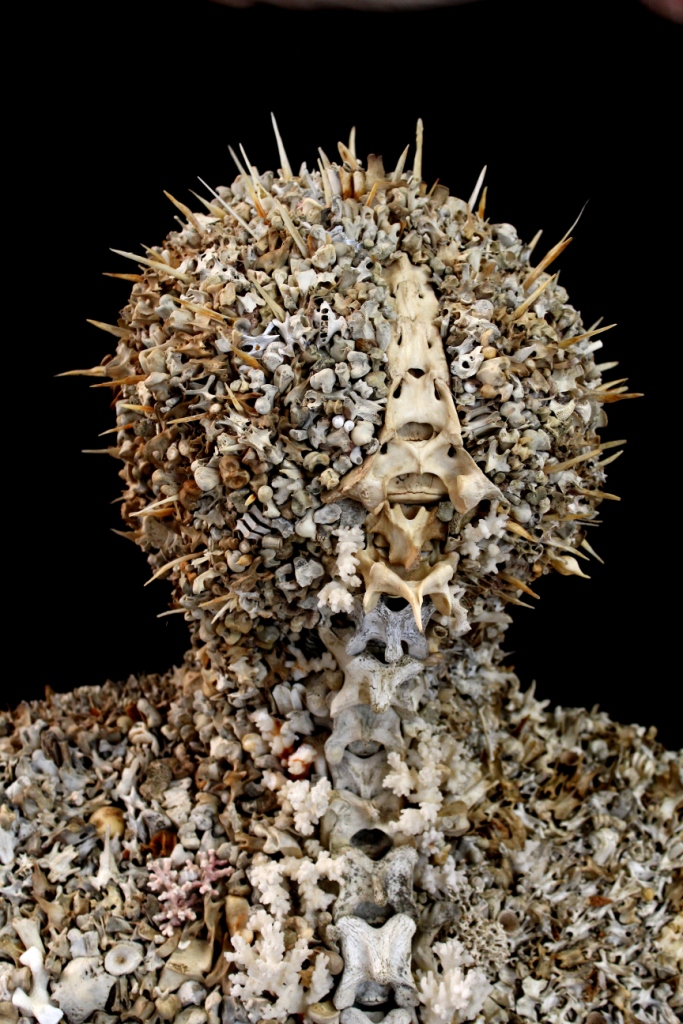‘Seeds of Life – the Bone Art of Bruce Mahalski’ is a new book by scientist and artist, Dr. Craig Hilton, with a foreword by Dr Billie Lythberg, which has been published by Auckland’s Rim Books.
Both men are interested in the ethical and philosophical implications of using biological material (living and non-living) in art to critique what they see as outdated and ‘species-dangerous’ social norms. The ethics of collecting biological material and making art with it are also discussed. The book’s title refers to the Ancient Aztec’s belief that their gods used human bones as seeds to grow new ones and Mahalski’s firmly held opinion that bones are not symbol’s of death but beautiful and enduring reminders of life. This sixty-four page book is illustrated by photos of Mahalski’s work by many noted NZ photographers including Michael Hall, James Gilberd and Andrew Ross.
In this excerpt , the artist talks to the writer about his process, and our delicate existence.

(CH) Where do you think you’re going with your work?
I think I’m only just scratching the surface of what I can and want to do with bones and other organic matter. I want to make much bigger things and cover whole walls with textural bone surfaces. I’ve just started to set up a small private institution in Dunedin called ‘The Museum of Natural Mystery’ based around my collections and my artwork.

(CH) When you make decisions in your work, does it matter, or is it important to you, that different species are mixed?
It depends entirely on the work. In the location-specific pieces, all the bones come from one place and it’s not important what species they are. They’re like 3D diagrams of the animal life in a particular locality. Other pieces such as ‘Prion Wreck’ (2012) stick to just one species. In this case it was to memorialise a disastrous natural event which affected these birds. ‘Rabbit Skull Rack #1’ (2014) is more of a statement about how common these animals are. But many works mix up the bones of animals (and sometimes humans) to make bigger statements about our inter-connectedness and our responsibility to try and safeguard the whole of environment while at the same time acknowledging and respecting animals which many people consider ugly and useless.
(CH) Do you think of the final work as a species fusion? A new species?
No. Definitely not. It’s more like a map of a particular place and time.
(CH) Especially the ones with skulls in the centre. Are you giving them life? Perhaps a voice again?
I’m not giving them life but I am trying to give them a voice. My mission is to expand the parameters of what most people see as beauty to give them a richer appreciation of other life forms and a desire to protect them. Our modern concept of beauty is both biologically and culturally determined. We tend to judge other animals by the extent to which they conform to our innate preferences as mammals. For instance, most people find fur more attractive than scales. We’re biased. We can’t go on writing off large chunks of the biota (insects and fish are classic examples) simply because we don’t find them physically attractive.
(CH) What motivates you to do that?
My unrealistic and overweening social conscience, and huge servings of existential guilt at being a (white male) human being.
You can buy a copy of ‘Seeds of Life’ for NZ$35 plus postage directly from this website.

